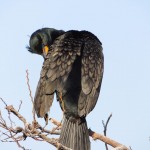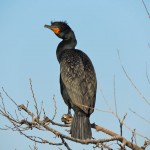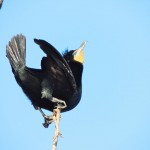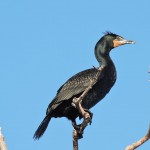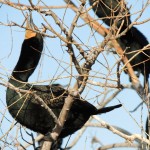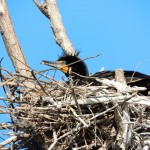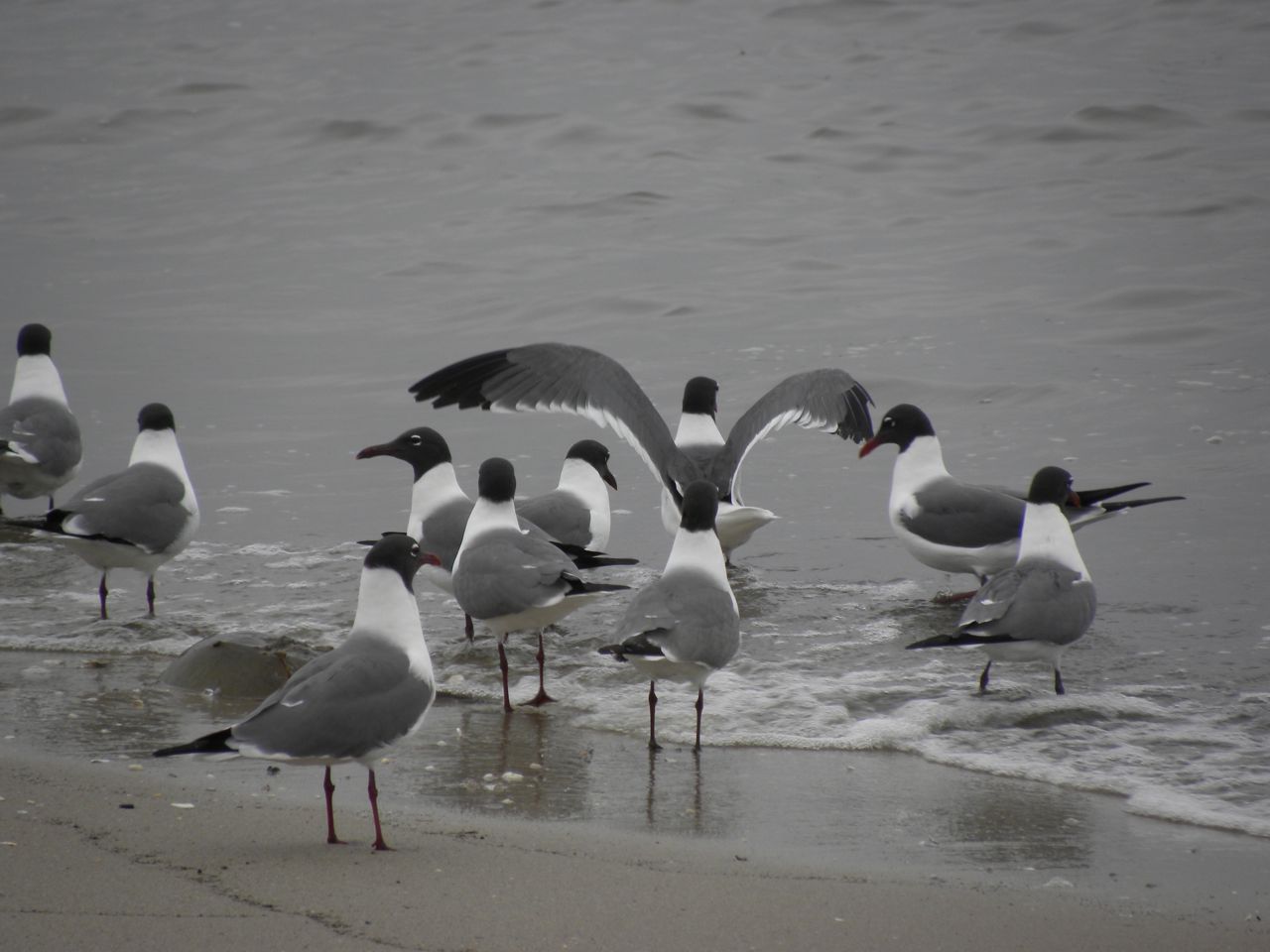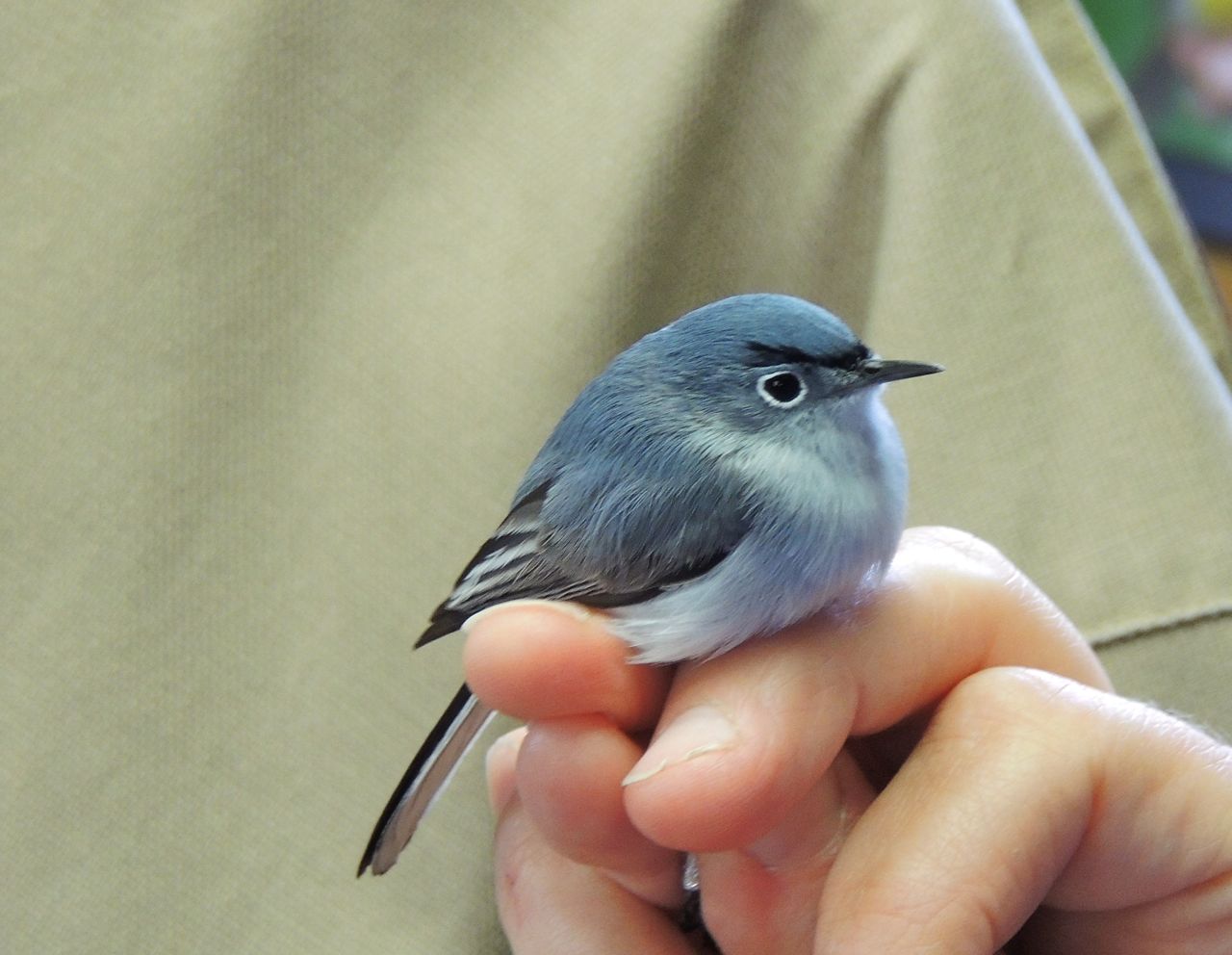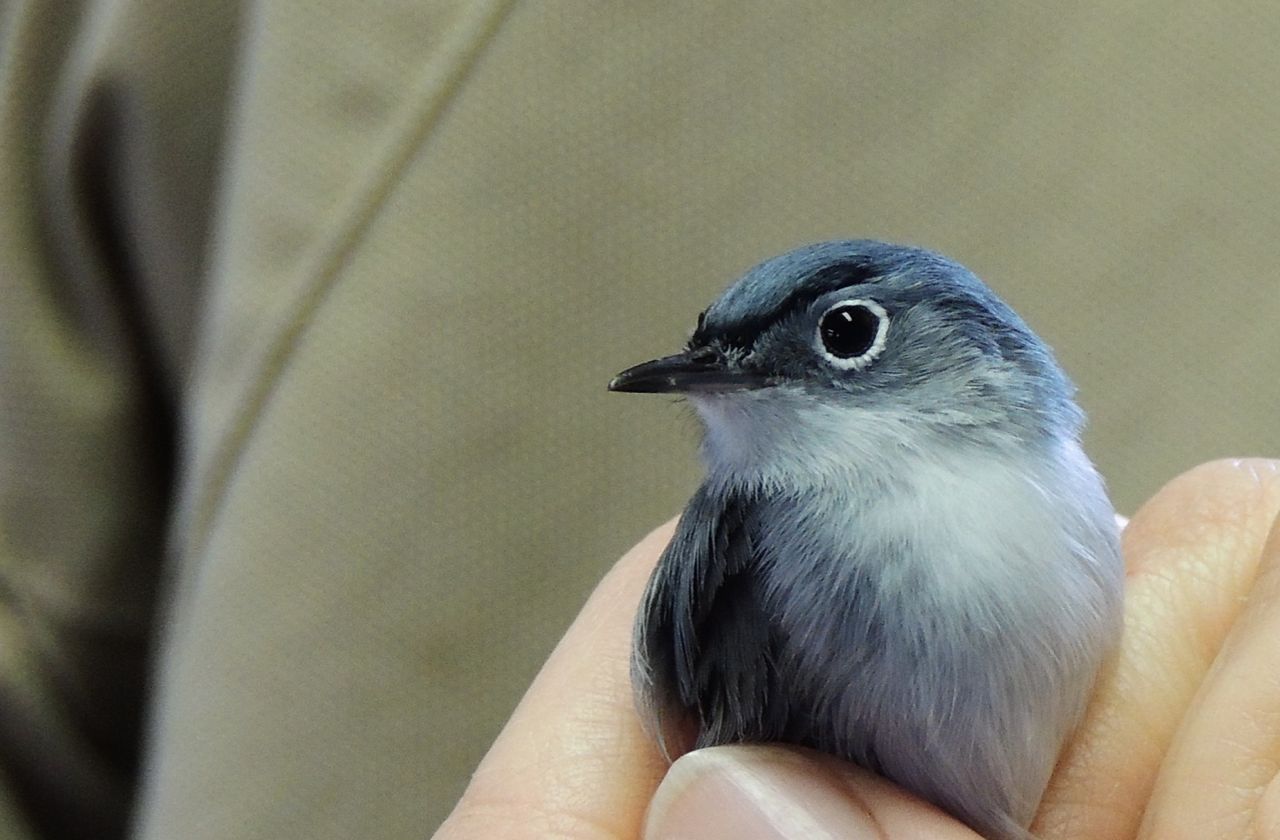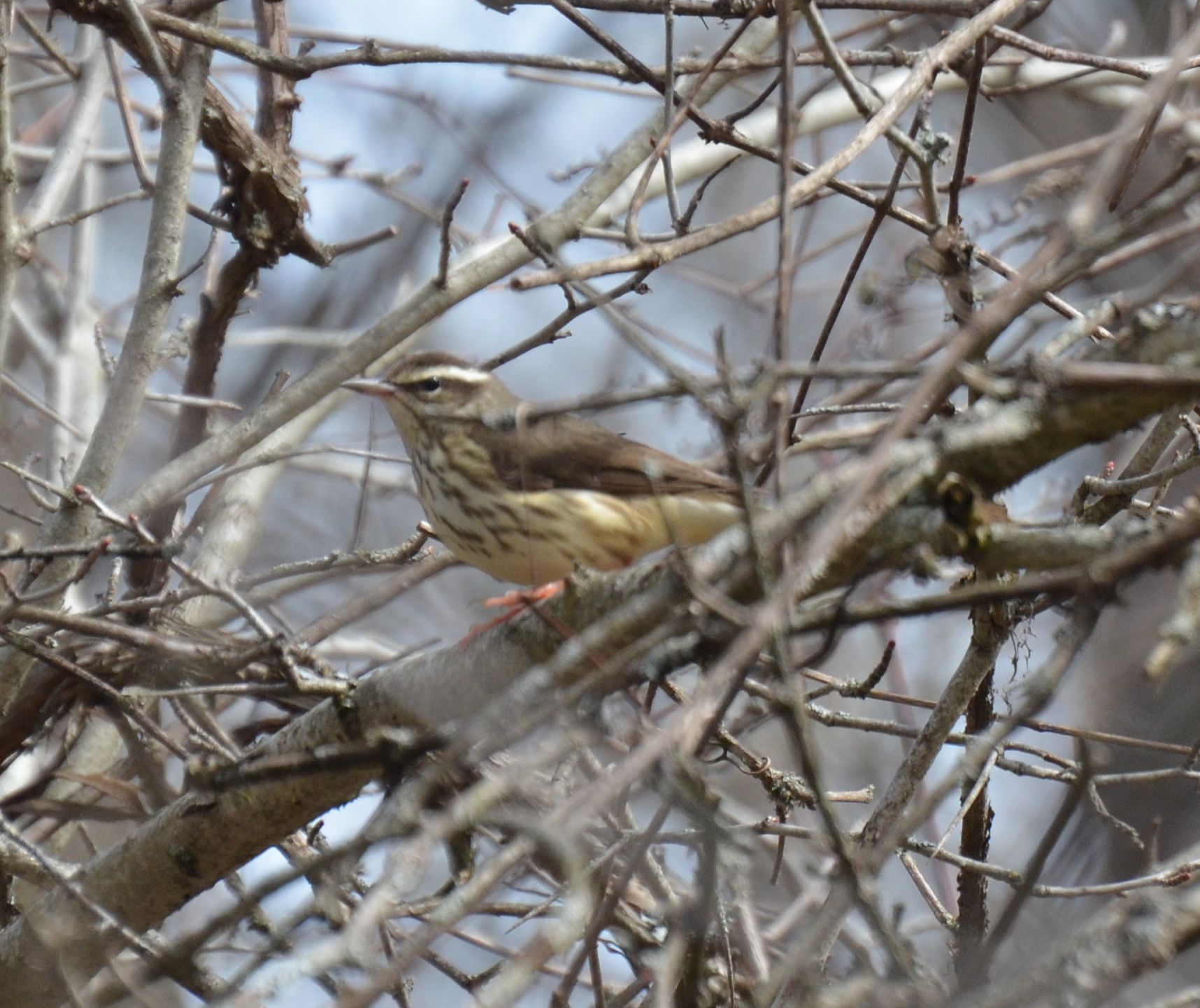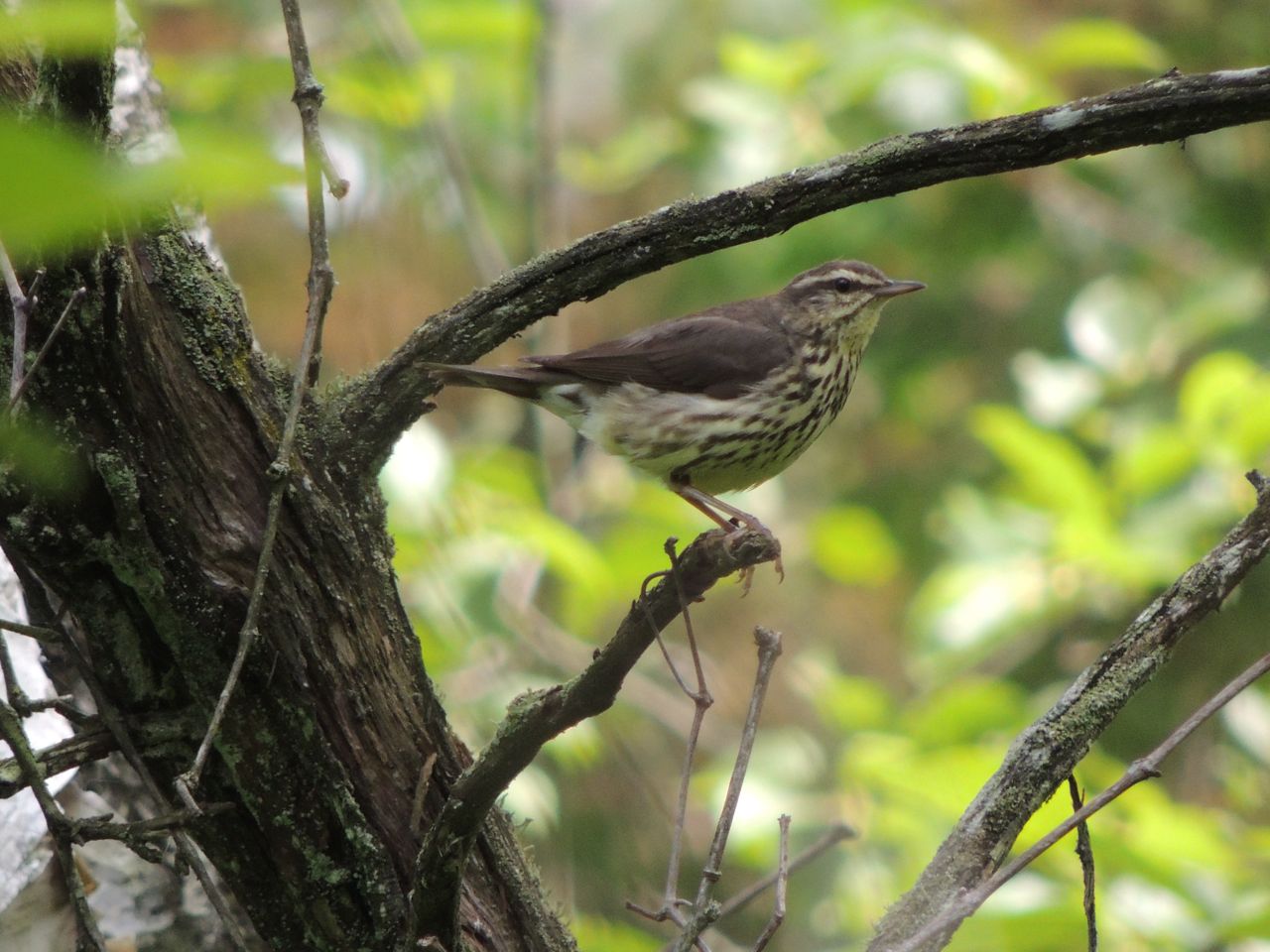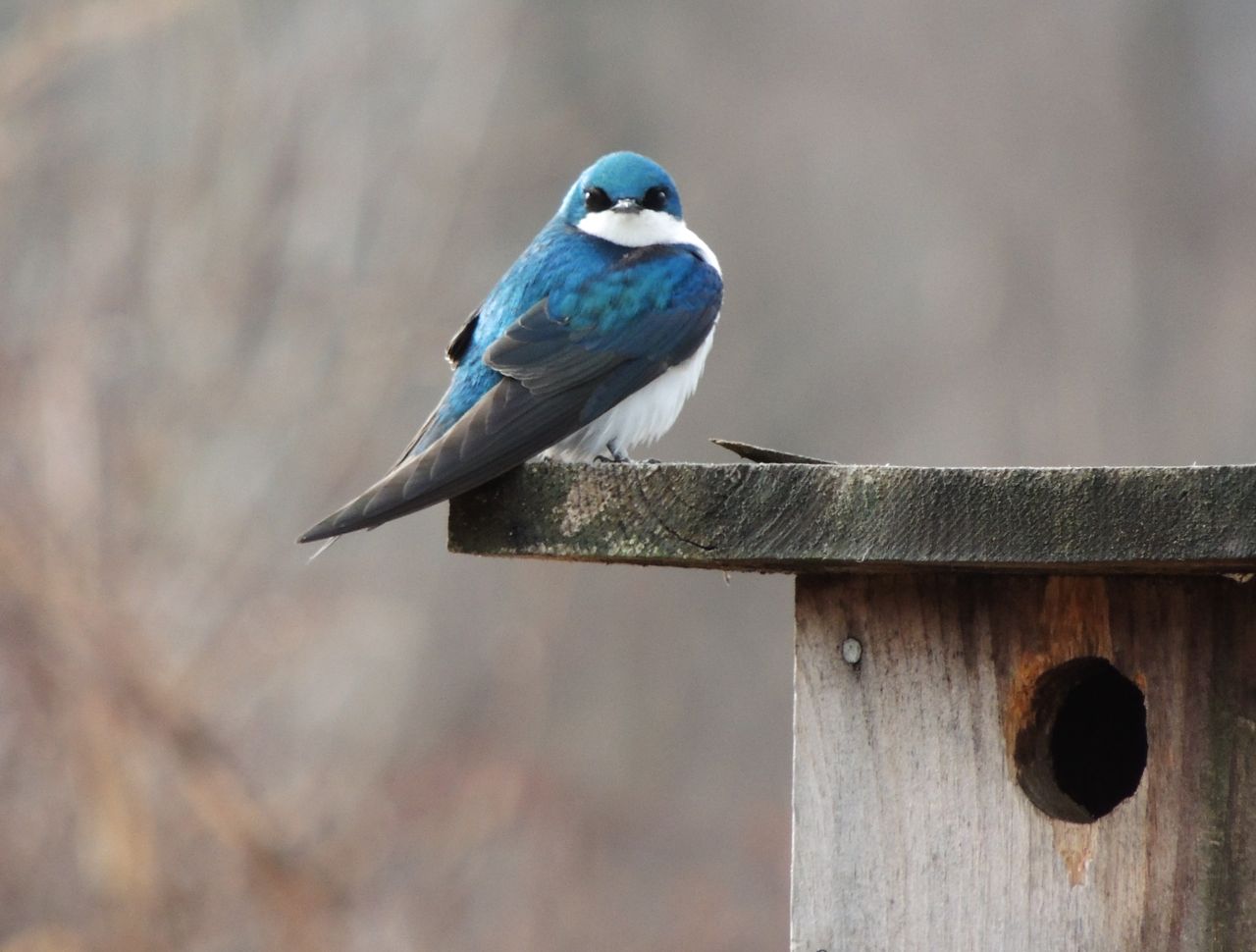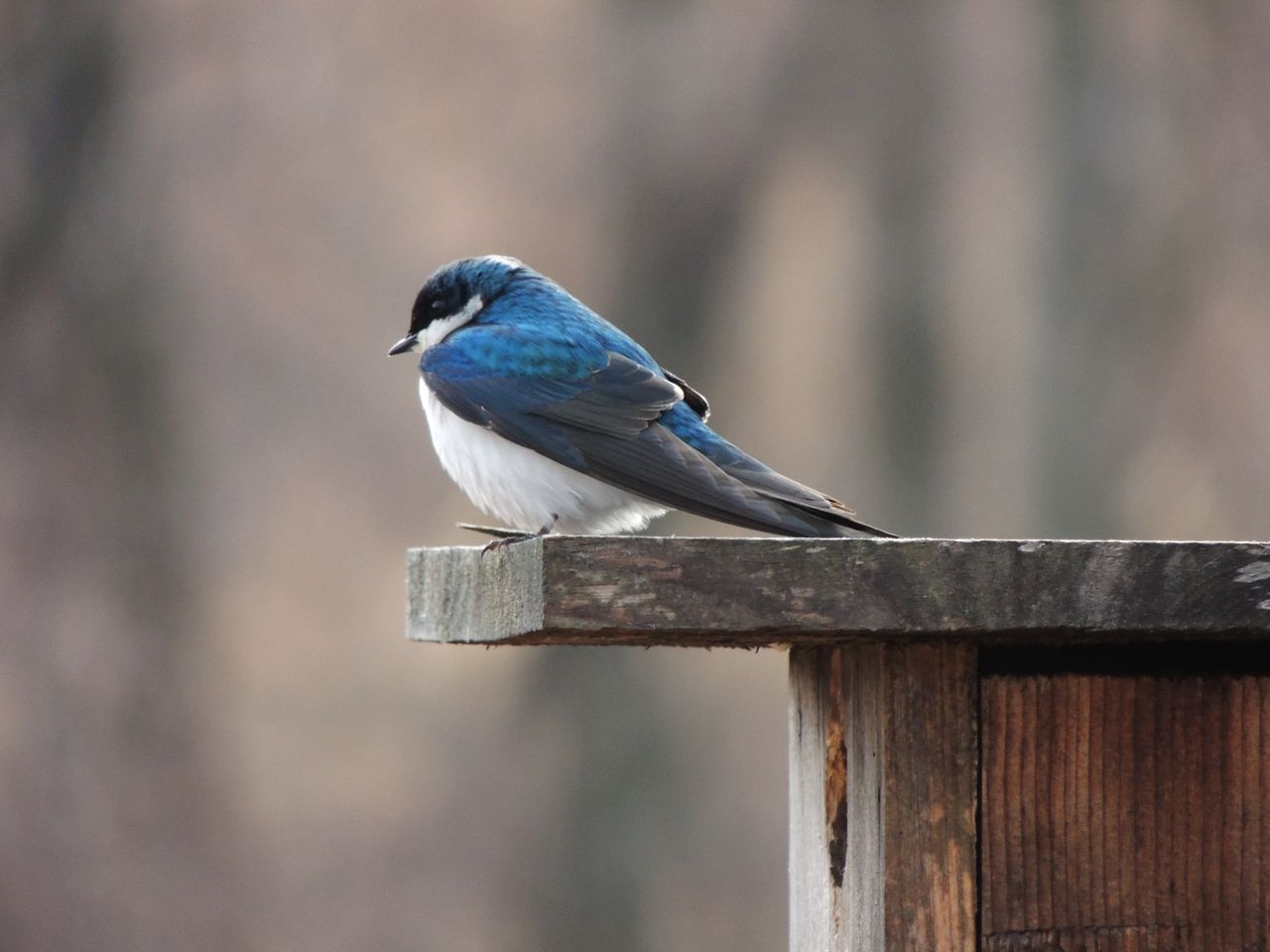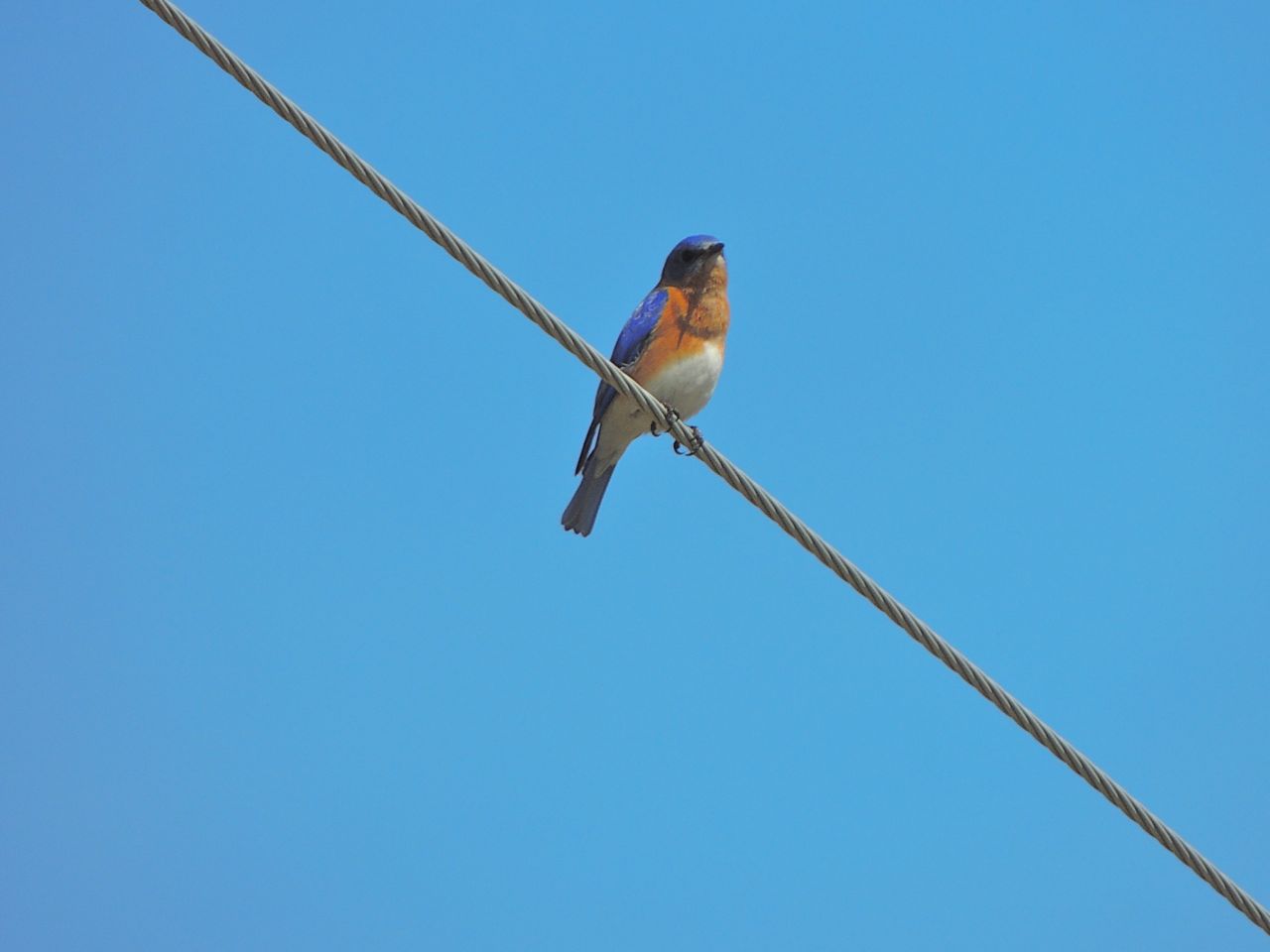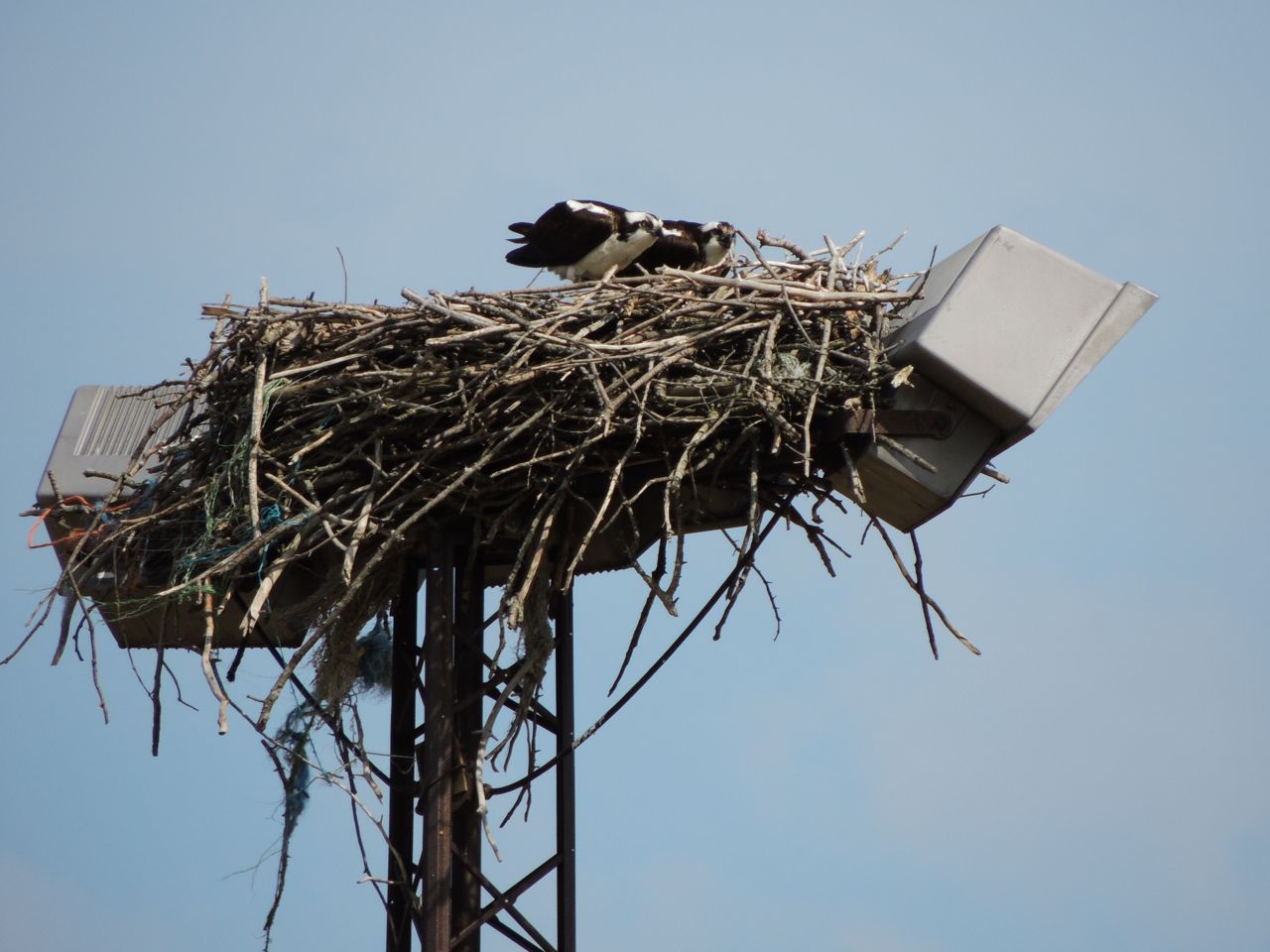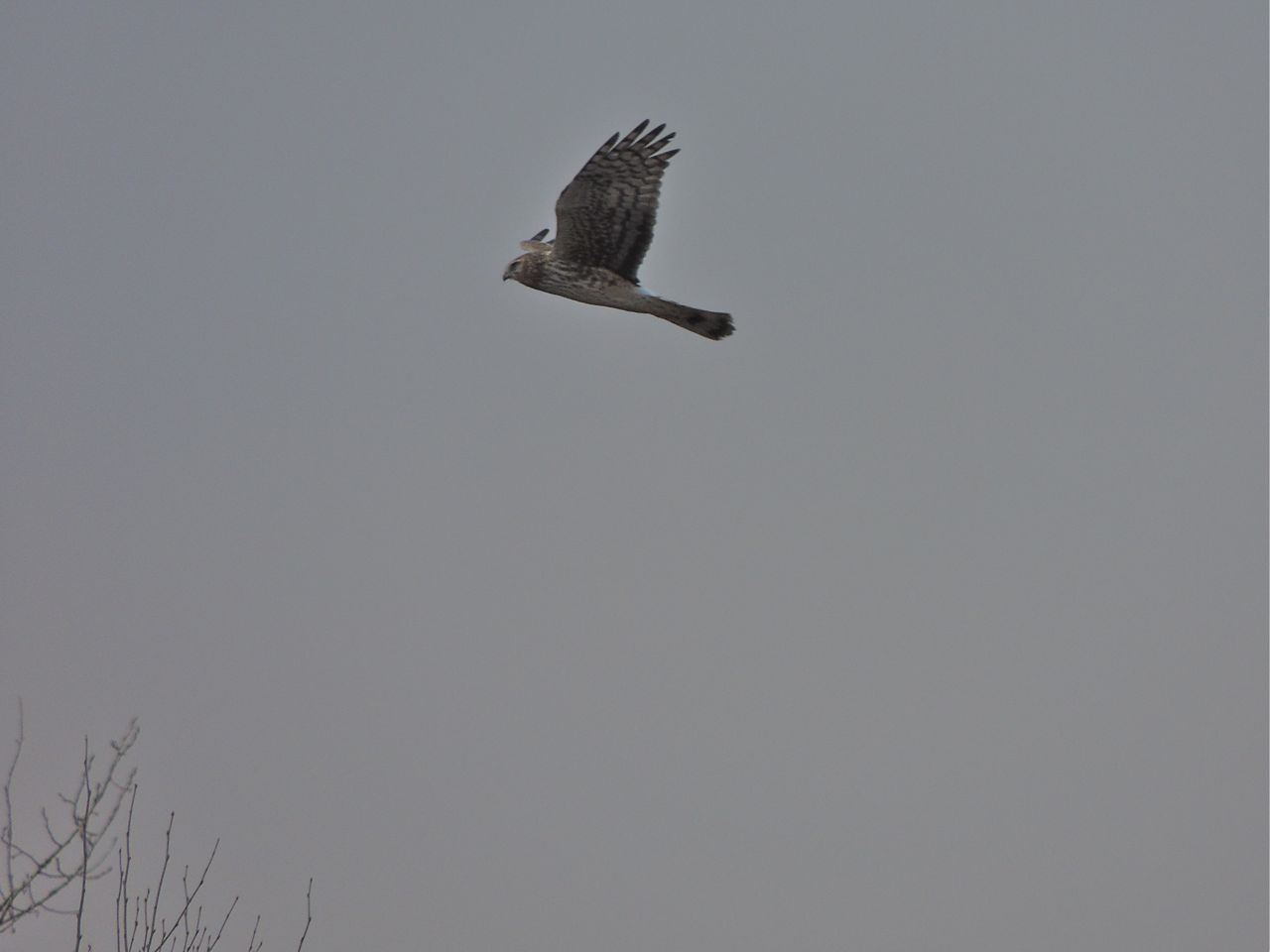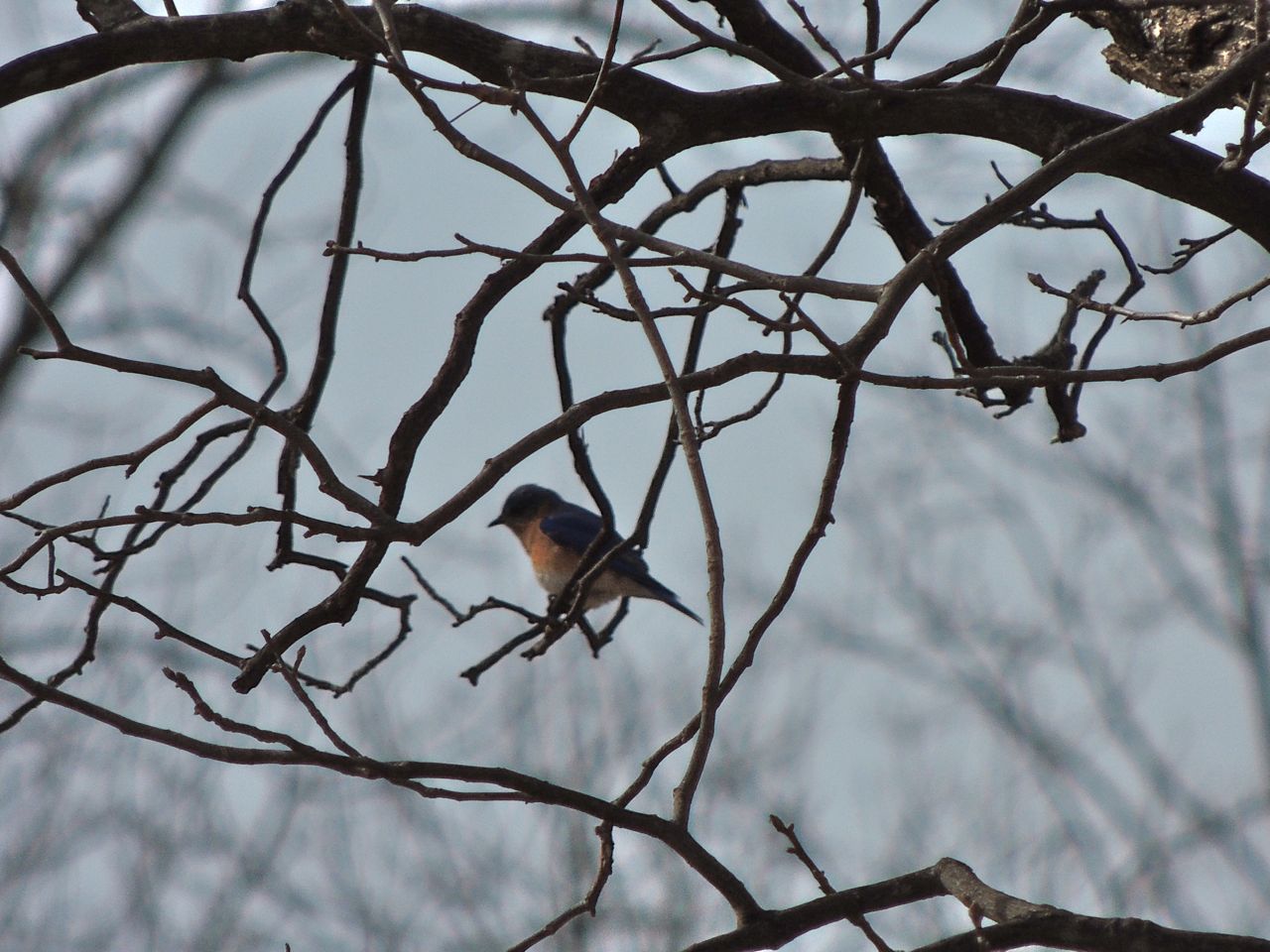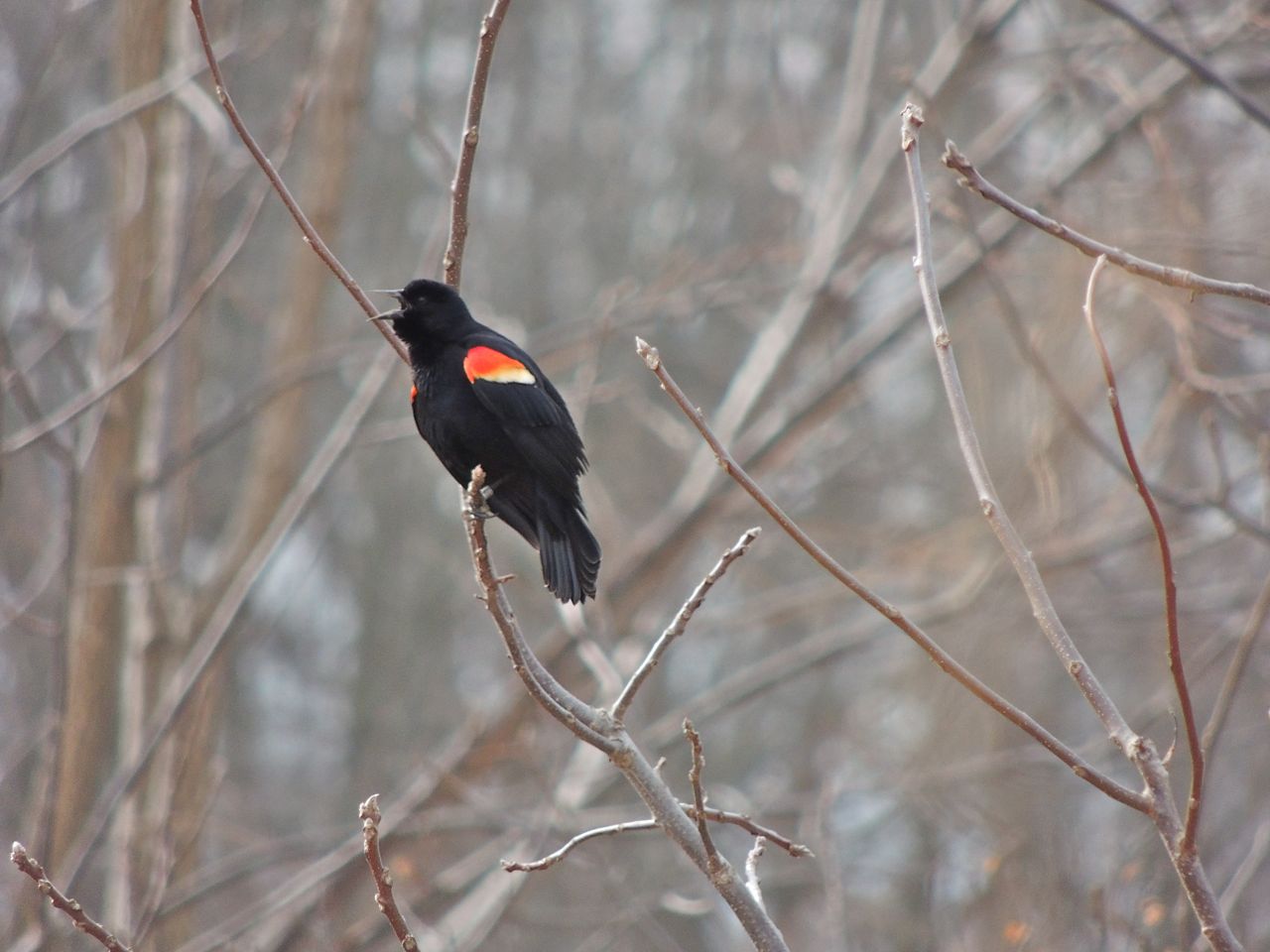16 April 2014. Hamilton ON. You’d be hard pressed to find someone who’s a fan of cormorants. Well maybe in China and Japan where tethered cormorants are used to catch fish for their masters. But in North America anyway, cormorants are variously seen as: ugly, dirty, destructive of fish stocks and a population out of control. While any of these may be true to a greater or lesser extent, depending on the subjectivity of your opinion, they are a bird (which is good) and supremely adapted to their environment. Sitting in my kayak, I’ve watched them dive and then followed the trail of fine bubbles that betrays their underwater course. Although I could never develop a warm feeling for them, I did admire them.
Today, taking my car to get an oil-change, I had a great opportunity to watch Double-crested Cormorants at close quarters when I stopped at a cluster of harbour-side trees which has been home to a large breeding colony for many years. This is a particularly active time of the year because the cormorants are forming pair bonds, claiming nest sites and making sure that everyone within pecking range understands exactly where he or she belongs in the colony’s societal structure. I also wanted to get a closer look at the so-called crest that makes up part of their name, a feature that is rarely easy to see.
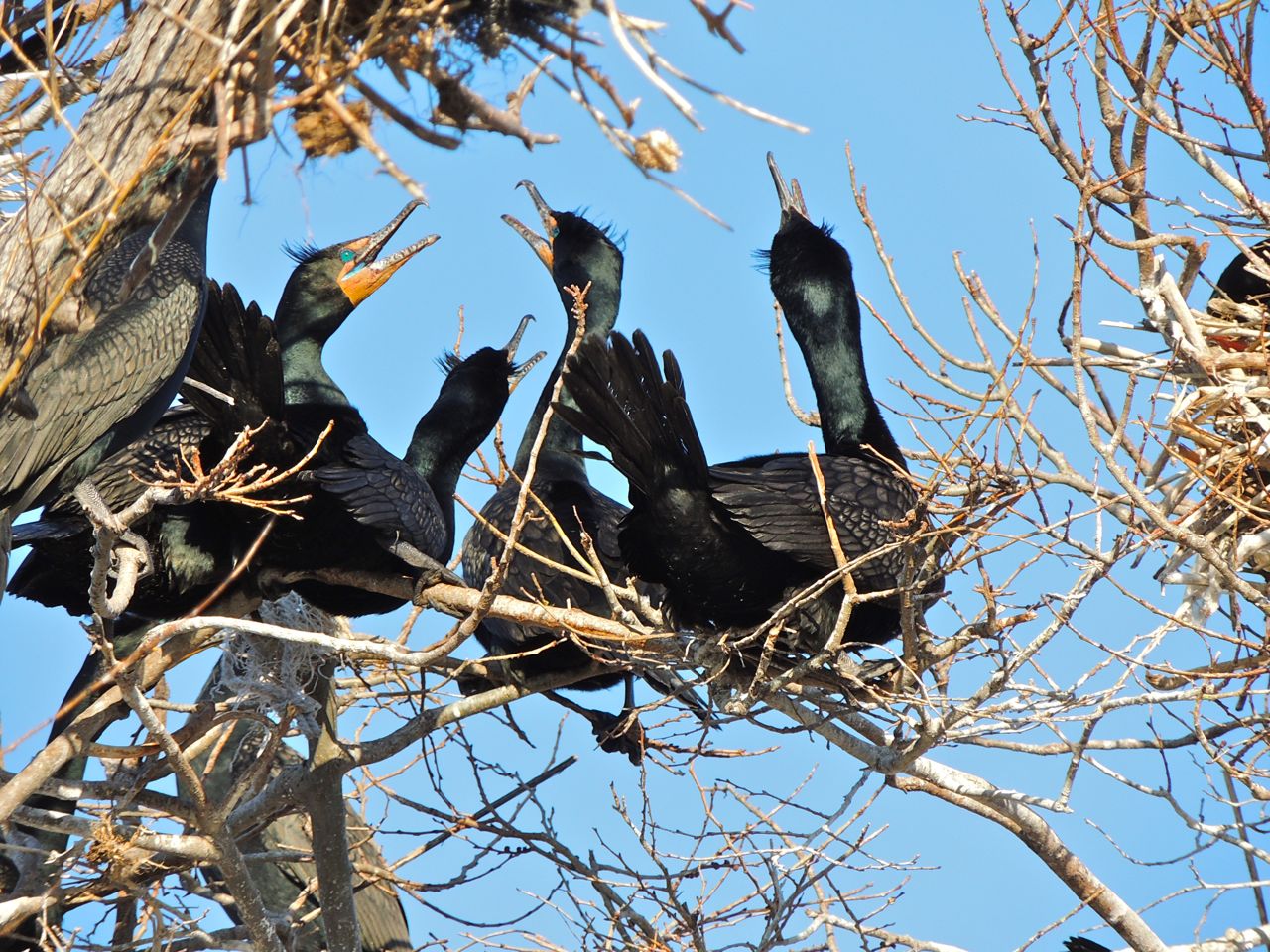
I didn’t have a lot of time and the passing traffic was a little disconcerting, but it was quite fascinating to watch flamboyant nest-site displays. Lots of bill-clacking, neck-stretching and wing-arching. There were also birds sitting quietly, some adding twigs to nest platforms and others apparently already incubating eggs – or maybe just resting.
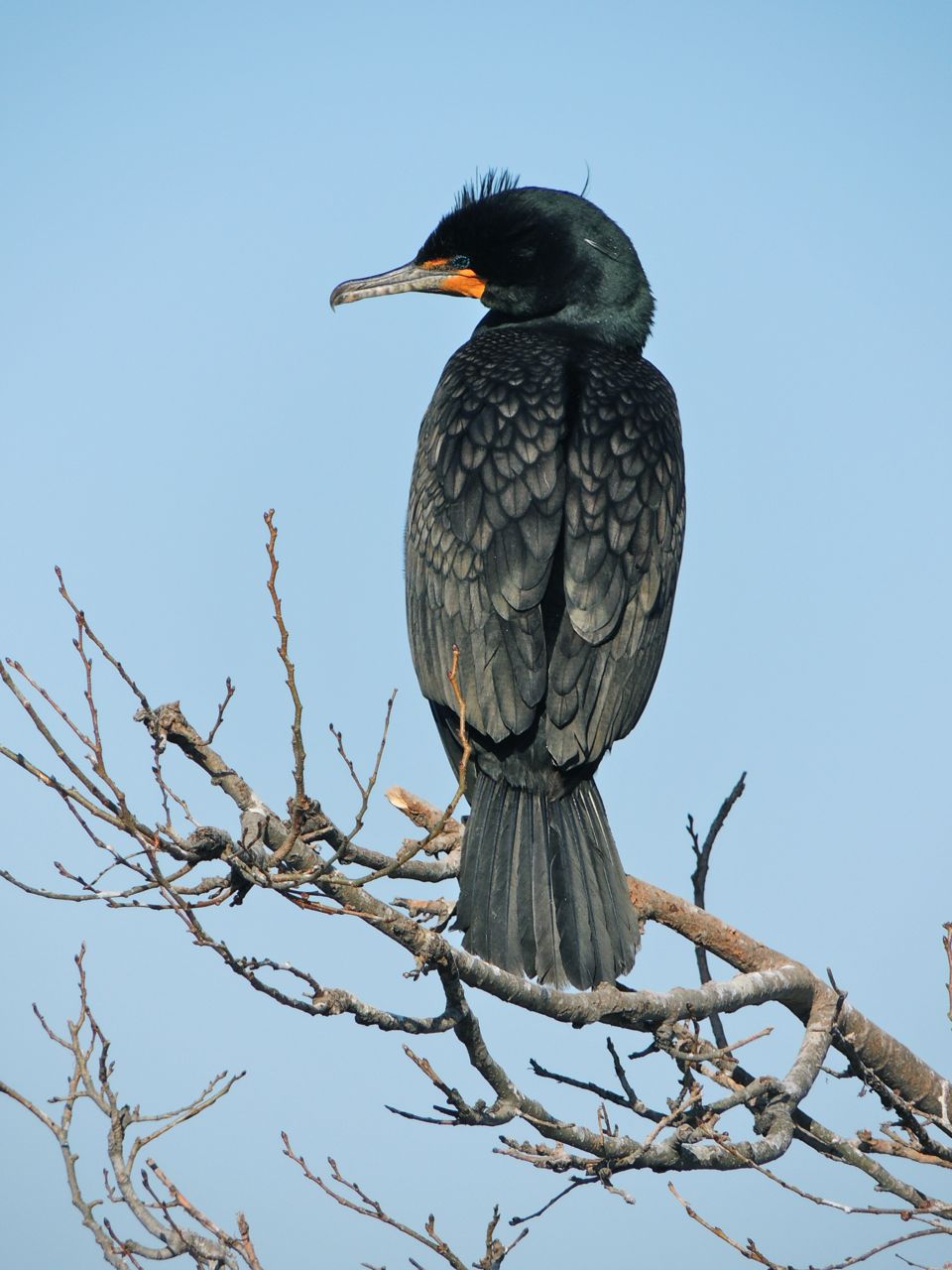
They were easy to photograph and it wasn’t until I downloaded the photos that I realized just what terrific birds these are. The cascading plumage of its back ending in a tense fan of a tail, the hooked fish-gripping beak, the orange and yellow of the gular pouch and supraloral skin are all quite arresting. As Pete Dunne in his excellent reference book, Pete Dunne’s Essential Field Guide Companion (click here for more) says, “The body language more than the face seems sinister. (At close range the shocking blue eyes of the adults are more arresting than sinister.) The “double crests”, suggestive of shaggy horns, are present only in the breeding season and are difficult to see.”
In anticipation that you can get past the bad rap these birds have, I hope you enjoy my photos.
This post contains photos in galleries visible only on the website, not if you’re reading this as an email.
